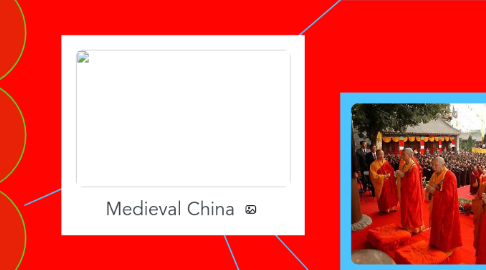
1. The Great Wall
1.1. Goals & Objectives: Goal: Students will be able to argue evidence for, and against, the building of the Great Wall of China by citing textual evidence. Objective: Students will understand the political, economic, and social costs/benefits of the Great Wall of China.
1.1.1. (Formative) Assessments: Formative assessments will be done in two parts of the lesson. The first one will occur during the discussion portion of the six hats strategy, when I will be walking around and listening to student conversations in order to understand how well students can use what they have learned from previous lessons in order to hold conversations about the Great Wall’s historical significance and practical use. Additionally, I would formatively asses during the lesson closure when I had students share what they learned from the discussion by their group’s final decision as to whether they think “the Great Wall of China was an architectural masterpiece that defended China, or, an ineffective and inhumane defensive border?” By writing down summations of what each group is using to tell their position, I can gain an understanding and insight into what the students have learned about the history of the Great Wall and what they have learned that they can use to converse about a historical topic. Additionally, by having students focus on conversing about the Great Wall, students will be expected to cite specific examples about the Great Wall (such as when it succeeded and failed) in conversation, thereby giving me a good understanding that my students have learned about different Chinese dynasties and how they came into power.
1.1.1.1. Teacher Will: The teacher will introduce students to the Great Wall discussion by playing two History Channel videos, and reminding students about China being conquered by foreign invaders regardless of the wall. During the "six hats" activity, the teacher will be more of an "advisor role", and not really focusing on trying to interject into every discussion, but instead, focusing on what the students are saying and if they are stating perspectives of their "hat". After the discussion, when every group presents their conclusion, the teacher summarizes each groups position and writes it on the board for everyone to see.
1.1.1.2. Students Will: The students will work watch the videos and address the questions that are asked of them regarding the Great Wall. After the video, students will then work in groups in order to complete the "six hats" activity by successfully splitting into their groups and answering the discussion question using their hats "perspectives". At the end of the period, students should be able to come up with the best answer to the discussion question, due to the students exploring from the question from multiple angles.
2. Daoism & Confucianism -Primary Source Lesson
2.1. Instructional Objective: Students will be able to distinguish between the philosophical influences of Daoism and Confucianism in Medieval China, while also recognizing the contribution each doctrine had on Chinese government.
2.1.1. Assessment: Formative Assessments done throughout this lesson by using student-student interactions on day 1 and day 2. Day 1: Understanding Confucianism & Daoism Day 2: Understanding Confucianism & Daoism in rule of law + complete Graphic Organizer
2.1.1.1. Teacher Activity: Day 1: Teacher will explain and model how to close read introduction to Primary Sources; Overview students and help when needed; Facilitate student readings of excerpts Day 2: Work with students as they close read introduction to Emperor Taizong; Facilitate student conversation about Daoism & Confucianism influence in the rule of law
2.1.1.2. Student Activity: Day 1: Students will work in their pairs on the Confucian or Daoist excerpt they received, while also filling out their graphic organizer comparing & contrasting the two religions. Day 2: Students will work on their Emperor Taizong worksheet in their pairs, while also finishing to fill out their graphic organizer.
3. Chinese Religions
3.1. Goals & Objectives: Students will be able to identify the different religions native to Imperial China with 100% religious title accuracy Students will recognize, and cite, the influences that each religion had on Chinese society, government, and economics.
3.1.1. (Formative) Assessment: This lessons formative assessment will occur during the student engagement and closing activity. By listening to students discussing their close reading questions, the teacher can tell if they have achieved the objective for the day by understanding student perspectives on the social, political, and philosophical values used during Imperial China. Another formative assessment will also be done during the closing activity of the exit card strategy, where the teacher will understand the explicit connections made between the student and one of the religions (Confucianism/Daoism) effect on China politically, socially, and economically.
3.1.1.1. Teacher Activity: The teacher will give an overview of how religions affect communities and civilizations. After this introduction, the teacher explains the Jigsaw activity and then oversees student groups as they work on the activity, answering any questions and providing guidance when asked to do so.
3.1.1.2. Student Activity: The students will answer the proposed questions by the teacher, then read through their individual sections and discuss what they learn with their "expert" and "home" groups. Students will do an "exit slip" to leave the classroom which focuses on any Chinese religion of their choice and the effects that it had.
4. Inventions
4.1. (Formative) Assessment: Students will cite 3 inventions from Medieval China that they have learned from the lecture along with 2 questions about them.
4.1.1. Teacher gives digital presentation on 5 inventions from Medieval China, along with their modern day use.
4.1.2. Students fill out guided-notes as they follow along with the digital presentation on Medieval China's inventions

